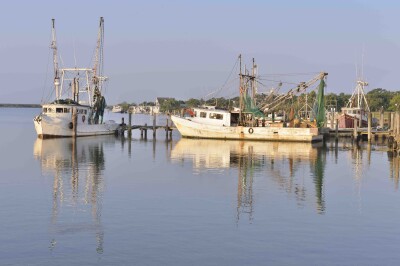Last week, President Trump named AccuWeather’s CEO to the top job at NOAA, our weather and oceans agency under the Commerce Department. It makes a good headline. Barry Myers is a weather guy; it’s a weather-related agency. But is he really a weather guy? By pedigree, Myers is a lawyer, not a scientist. His expertise is making money from weather forecasting. He is also the first NOAA administrator in almost 40 years to be lacking a science degree. I don’t believe degrees are everything, but I’d like to see some experience in its place. Myers is effective at making a profit from weather products, but he has no experience coordinating a nonprofit agency of scientists who gather the raw data on which his products are based.
There’s also the small matter of a potential conflict of interest. Myers is now in charge of the federal service that provides the foundation for his family business. In his role as CEO, he advocated for restrictions on public access to weather data so private weather companies (like AccuWeather) could profit from the very data that is collected with our tax dollars. In short, he’d like to use your money to gather data that you can’t access except through private companies like his, effectively making Americans pay twice for his product.
One might hope that the folks at the top would be on the lookout for conflicts of interest. But the top brass at the Commerce Department is already under scrutiny for an apparently willful violation of the Magnuson-Stevens Act.
Department memos filed in a lawsuit in July revealed an apparent scheme to allow significant overfishing in the Gulf of Mexico recreational sector.
The notes between Commerce Secretary Wilbur Ross (a billionaire investment banker) and Earl Comstock, policy and planning director for the agency, show a clear intent to allow overfishing as a ploy to force a management shift in the fishery.
“It would result in overfishing of the stock by 6 million pounds (40 percent), which will draw criticism from environmental groups and commercial fishermen,” said Comstock of the plan in a June 1 memo to Ross. “However NMFS agrees that this stock could handle this level on a temporary basis.”
This fishery, however, has been overfished by the recreational fleet for many years already. And for all of those years, the sector has bemoaned the fact that they should held accountable for fishing within the limits. And of course, those numbers don’t include all the snapper caught recreationally and never reported. Meanwhile, the commercial fleet is required to file trip reports, submit to vessel tracking devices and fish within the limits every single year.
In recent years, the Coastal Conservation Association has gone to bat for the recreational side and has lobbied hard for state-divided management of the federal fishery. What that would mean is that each state could decide how it wants to manage its portion of the quota. They would not be held to standards of Magnuson, nor would they be required to designate quota to the commercial fleet or even to ensure the future of the fishery for anyone.
Recreational interests have made many end-runs around this problem, lobbying Capitol Hill to try to free their fishery from federal oversight. But this latest workaround came right from the top — the federal agency that manages fisheries.
Did these chiefs at Commerce not understand that their plan to allow overfishing was in direct violation of the Magnuson Act before forging ahead? We’re not talking one of those lowly standards that the regulators routinely ignore, like accounting for a fishery’s importance to a community. Knowingly allowing overfishing is a violation of National Standard 1 — “Conservation and management measures shall prevent overfishing while achieving, on a continuing basis, the optimum yield from each fishery for the United States fishing industry.”
The memos reveal knowledge of the Magnuson Act’s buffer that prevents a judge from issuing a temporary restraining order. This meant that the 39-day bonus recreational red snapper season “would remain in effect for at least 45 days before a court could act,” Comstock noted. Did they understand this loophole in the law but not the National Standards?
Perhaps they forgot that their memos are part of the public record. Or because their success does not rely on making careers in the public sector, they felt free to scheme on our dime and on our time. This deal, after all, takes fish out of the public marketplace and places it in the hands of a small group of hobbyists.
The rationale, of course, is that a three-day red snapper season is damaging to the heavily favored tourism industry in the Gulf of Mexico. But what about the tourists’ ability to eat red snapper in restaurants? What about the value of the commercial fishing industry to these same port towns? And finally, how about having the recreational fishery fish within limits for once? The fishery is rebounding because commercial fishermen have undergone a severe wave of consolidation and restriction to reduce effort. And now the federal government wants to hand over their sacrifices to the recreational fleets so they can continue to overfish.
How long will the fishery exist if it’s overfished year after year after year? As flawed as the IFQ system is, it did work to bring back the reef fish population at tremendous pains to the commercial fleet. Will these sacrifices be worth nothing?
If so, you can rest assured the CCA will not stop here.
Ultimately, it leaves me wondering yet again why our federal fisheries are managed by a weather agency under the Department of Commerce.







